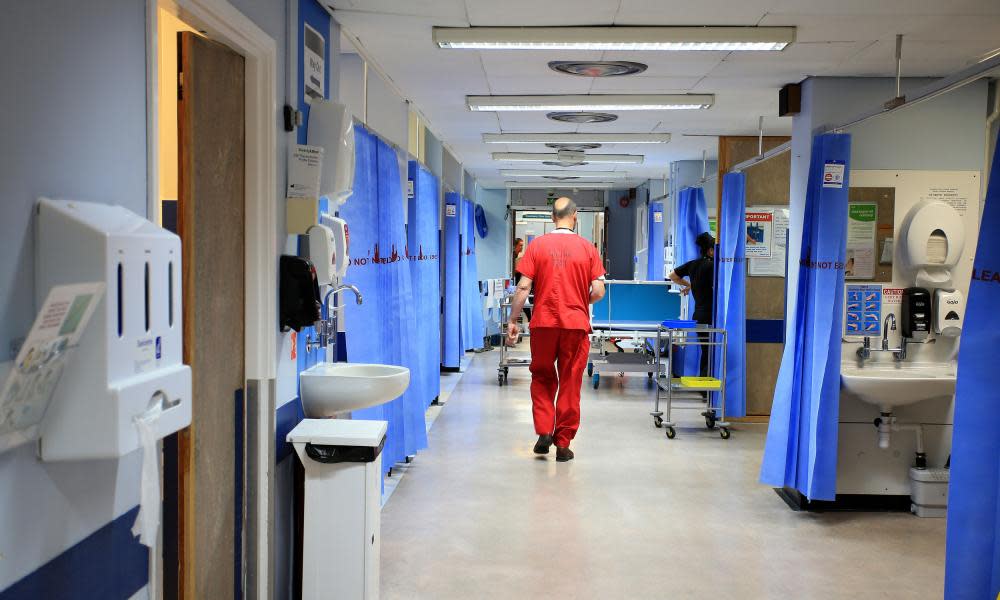NHS trusts post 'unsustainable' £886m third-quarter deficit

NHS trusts in England posted a deficit of £886m at the end of the third quarter, £300m more than the target for the end of this financial year.
NHS Improvement (NHSI), which published the figures on Monday, predicts a year-end deficit of £750m-£850m, much higher than the £580m previously described as the highest figure the health service could afford without risking major financial problems.
After the first six months of the financial year, the deficit was £648m, but at that stage NHSI was clinging to the possibility that it could hit the end of year target. But on Monday it acknowledged this would not happen, blaming “one of the most challenging winters on record” with 5.34 million patients attending A&E units between October and December – 200,000 more than the same period in 2015 – and a 3.5% increase in the number of patients requiring major further in-hospital treatment.
Lost bed days, when medically fit patients cannot be discharged due to constraints on community or social care, were also up on Q3 2015-16, to 390,392, a 28% rise, meaning providers lost income from elective operations because of a lack of capacity.
The NHS Confederation, which represents health service organisations, called the deficit “a tragedy”.
NHS Providers, which represents trusts, warned that, as bad as the figures were, they would have been much worse were if not for a series of one-off savings, which were unlikely to be repeatable.
The NHS Providers chief executive, Chris Hopson, said: “Despite doing everything they possibly can, NHS trusts are £300m behind the target of reducing the provider sector deficit to £580m by the end of March. This is largely because of winter pressures.
“Trusts spent more than they planned and they lost income from cancelled operations – both were needed to create the extra bed capacity to meet record emergency winter demand. This shows the danger of planning with no margin for unexpected extra demand. We can’t expect to run NHS finances on wafer thin margins year after year and keep getting away with it.
“We shouldn’t kid ourselves. The NHS’s underlying financial position is not sustainable.”
A survey by NHS Providers was also published on Monday. The poll completed by finance directors from 99 hospital, mental health, community and ambulance trusts – more than 40% of the NHS provider sector – found that two-thirds said they were only staying on track as a result of one-off savings that may not be achievable next year and beyond.
Those one-off savings totalled £340m but modelling by NHS Providers suggests they could amount to as much as £1bn across the sector.
NHSI said that the overspend was £1.3bn better than at the same point last year with 44 fewer providers (135 in total) ending the quarter in deficit, compared with the same period in 2015-16.
However, this year’s figures have been boosted by a substantial injection of emergency cash from the government. In total, £1.8bn of sustainability and transformation funding has been earmarked for trusts, although not all of it has been paid out yet.
The NHSI chief executive, Jim Mackey, said providers had worked hard to improve their finances in the face of record demand. “However, the job is not done yet and we need each and every organisation to play its part,” he said.
“We will be working very closely with those providers off plan to bring them as close as possible back to plan this year, potentially through the extension of financial special measures.”
The NHS Confederation chief executive, Niall Dickson, said: “This is a tragedy – the NHS had made huge strides to treat and care for patients promptly but the latest figures show a further deterioration – and behind those figures lie real suffering for patients and exhausted staff.” He said the immediate priority was additional funding for social care.
Health analysts warned that the dire figures were a straightforward consequence of failing to increase NHS and social care funding in the face of rising patient demand.

 Yahoo News
Yahoo News 
